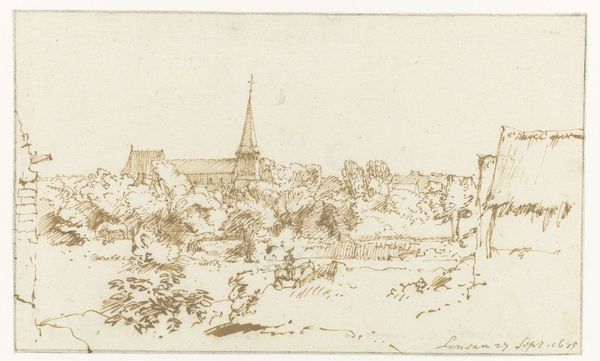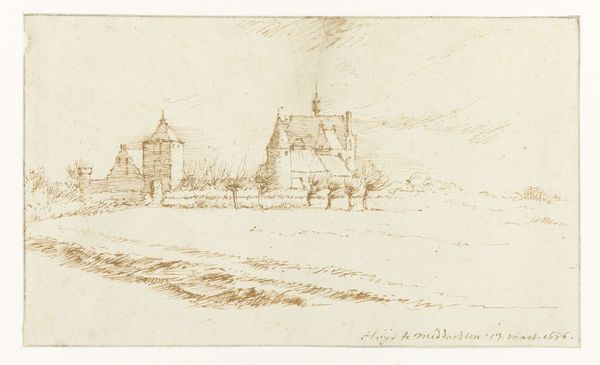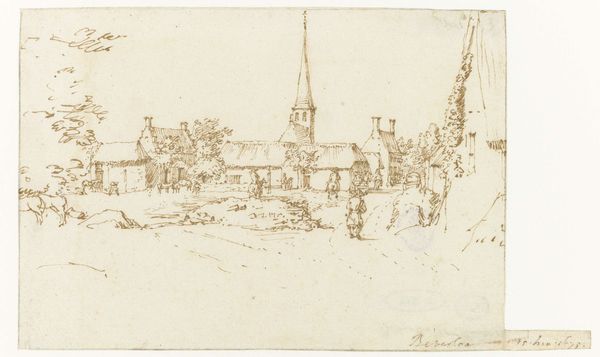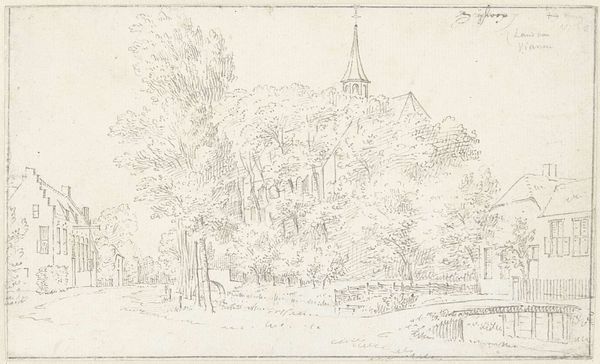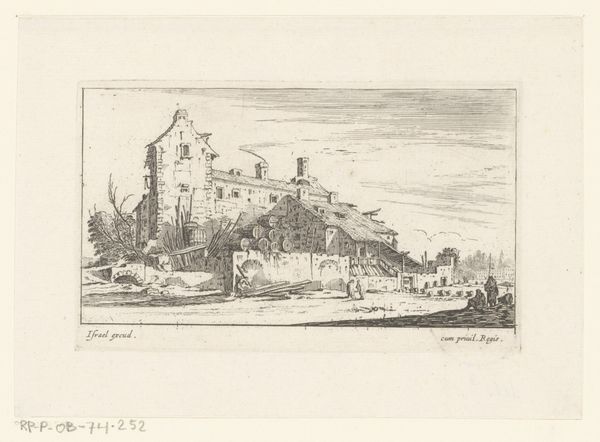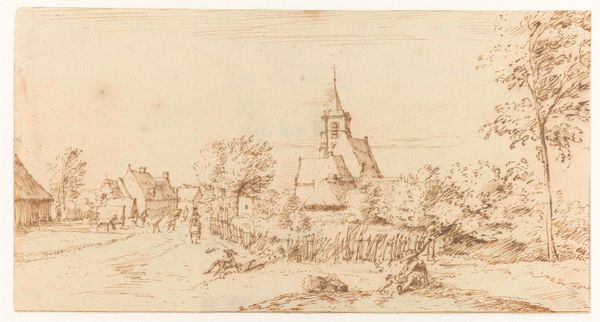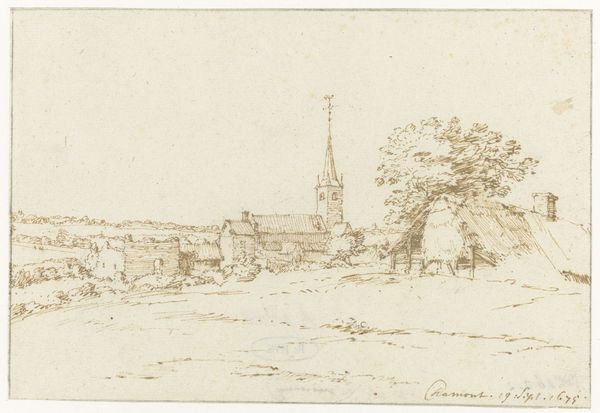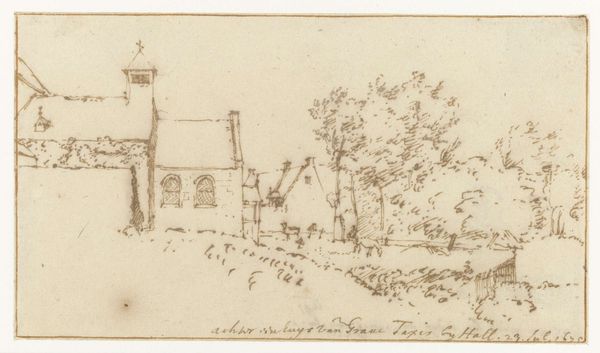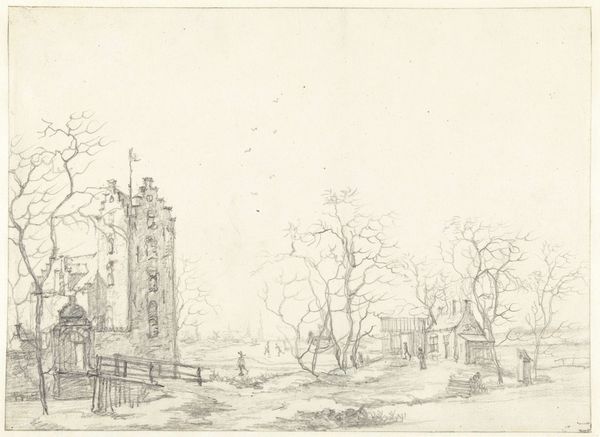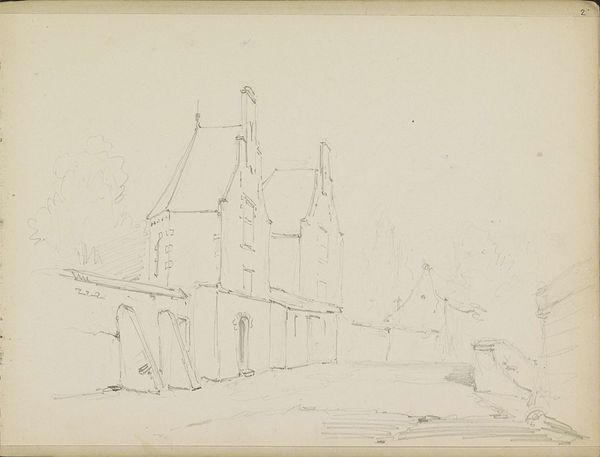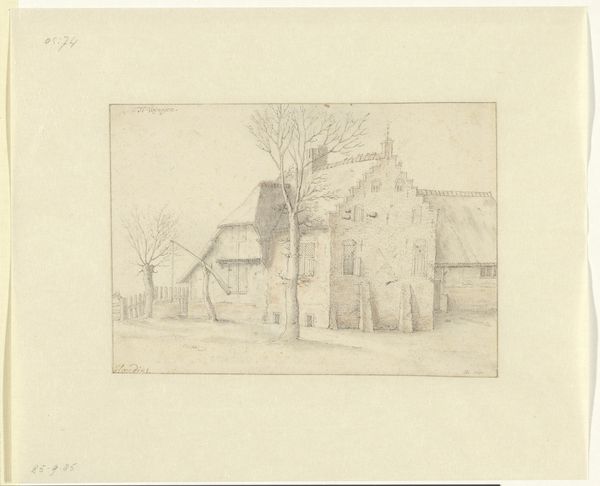
drawing, etching, paper, ink, architecture
#
drawing
#
dutch-golden-age
#
etching
#
landscape
#
etching
#
paper
#
ink
#
architecture drawing
#
architecture
Dimensions: height 104 mm, width 154 mm
Copyright: Rijks Museum: Open Domain
Curator: Constantijn Huygens' "Gezicht op Roggel," possibly from 1673. It's rendered in ink on paper using drawing and etching techniques. Editor: There's an immediacy to this; a sketch-like quality that suggests a fleeting moment captured. A modest village scene, melancholic perhaps? Curator: I see the work’s delicate use of line to construct a perspectival space. Observe how Huygens defines form—the church steeple, the thatched roofs—through carefully placed hatch marks. Note, too, the structural integrity he achieves with minimal tonal variation. Editor: Indeed, but let's consider the subject: Roggel, a small village, rendered with a seemingly intentional humbleness. Given Huygens’ status—secretary to multiple Princes of Orange—this unpretentious depiction could be seen as a commentary on the relationship between power and the everyday. A nod perhaps, to the value of local communities against the backdrop of the Dutch Golden Age's burgeoning global power. Curator: Interesting. One could also see it simply as Huygens exercising his skill in capturing architectural details and natural light effects using linear precision. He uses hatching, and it is most efficient—note the economy of strokes conveying textures in the foliage, the roofing—almost mathematical. Editor: True, the precision is undeniable. But the bare branches of the trees hint at a certain temporal vulnerability, an acceptance of the seasons mirrored perhaps in the lives of Roggel's inhabitants. There is evidence to show Roggel suffered extensive damage in both the 16th and 17th centuries, could the image be interpreted as a moment of recuperation from societal traumas, or a wider exploration of collective vulnerability and rural resilience? Curator: Ultimately, its success lies in the controlled deployment of graphic language, the stark contrasts against the paper highlighting Huygens' talent. It's in those elegant delineations that meaning is most acutely registered. Editor: I would counter that such simplicity can hold a multiplicity of interpretations, enriching our engagement with both the art and its historical context. Curator: A fine intersection between design and reflection on time's influence and human actions—excellent food for thought. Editor: Exactly, there is value in both aesthetics and broader themes in order to fully engage the viewer.
Comments
No comments
Be the first to comment and join the conversation on the ultimate creative platform.

